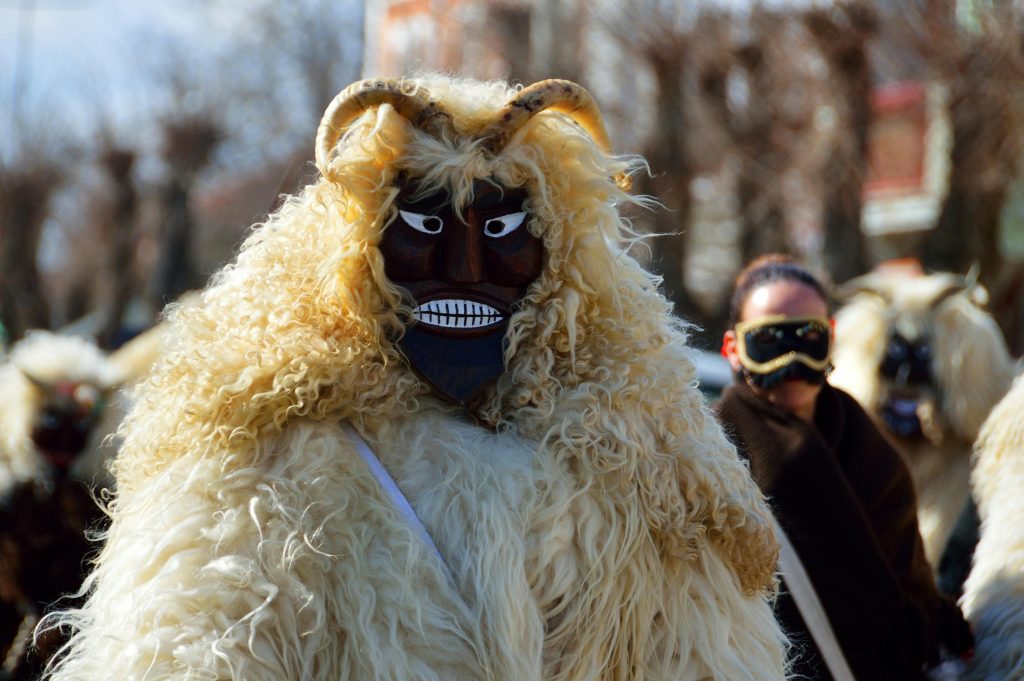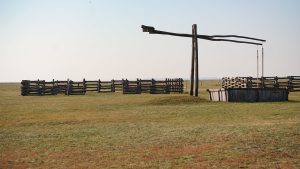Every February, the sleepy southern town of Mohács wakes up as masked figures roam its cobbled streets, flames light up the night sky, and the sound of drums and cowbells echoes through the Danube Valley. This is no ordinary carnival—this is the Busójárás festival, a surreal, six-day celebration where ancient legends, folk rituals, and joyful chaos collide.
This UNESCO-recognized tradition marks the end of winter and the welcoming of spring. Yet for the people of Mohács, it’s more than just a seasonal festival—it’s a living, breathing embodiment of identity, resilience, and joy. Whether you’re chasing authenticity, folklore, or simply a unique travel story, the Busójárás festival offers all three—wrapped in sheepskin and carved in wood.
The Legend Behind the Masks
The origins of the Busójárás festival are steeped in myth and cultural memory. One widely told legend recalls the 16th-century Ottoman occupation of Mohács. According to this tale, the townspeople—having fled the invading Turks—returned in disguise, wearing grotesque wooden masks and sheepskin cloaks. Under the cover of night, they snuck back into town, banging loudly on drums and rattling chains. Frightened by the terrifying figures, the Ottomans fled.
Others believe the roots of the festival go even further back, to pre-Christian, pagan rituals meant to drive out winter and summon spring. Regardless of which story you prefer, the message is the same: transformation, resistance, and renewal. The Busójárás festival is a cultural exorcism—chasing away cold, fear, and darkness through noise, fire, and laughter.
The Fearsome Busós: Icons of Folklore
The most distinctive feature of the Busójárás festival is the busós themselves—men (and more recently, women and children too) who dress in dramatic costumes to personify wild, otherworldly spirits. Each busó wears a hand-carved wooden mask, often featuring exaggerated noses, sharp teeth, horns, and blazing eyes. These masks are both frightening and fascinating—miniature works of art that combine humor, threat, and tradition.
The outfits are completed with thick wool cloaks, boots, leather belts with cowbells, and wooden clubs or noisemakers. The purpose is both symbolic and practical: to make as much noise and chaos as possible. The busós don’t simply walk—they storm through town in packs, dancing, howling, laughing, and occasionally sneaking up behind unsuspecting visitors. Their mischief is harmless, but their presence is unforgettable.
Each mask is traditionally carved by local artisans or passed down through generations. The craft of mask-making is itself a celebrated tradition in Mohács, with workshops open year-round. For many locals, preparing for Busójárás is a months-long affair—designing costumes, gathering props, and plotting how best to raise a little old-fashioned mischief.
A Six-Day Festival Full of Fire, Folklore, and Fun
While the final Sunday of Busójárás draws the largest crowds, the entire six-day festival is packed with events that bring Mohács to life. It begins in a softer tone, with a children’s parade where young locals dress up as “mini-busós,” showing off their own masks and costumes. It’s an adorable and meaningful way to pass the tradition to the next generation.
As the days progress, the town’s squares fill with live folk music and dance performances. Traditional Hungarian and Slavic rhythms mix with the clang of busó cowbells, creating a constant, energetic soundtrack. Local dance troupes perform in embroidered costumes, while musicians play violins, tambourines, and accordions, inviting onlookers to join in spontaneous dance circles.
At the same time, artisans line the streets with booths and stalls, offering handmade goods and demonstrations. Visitors can try their hand at carving a miniature mask, learn the basics of Hungarian embroidery, or simply browse through a colorful array of crafts, pottery, and traditional clothing. It’s an immersive folk market unlike anything you’ll find in tourist-filled cities.
Food and drink are everywhere, adding delicious layers to the sensory experience. Street vendors serve up Hungarian specialties like lángos (deep-fried flatbread), kolbász (sausages), and kürtőskalács (chimney cake). The chilly February air calls for steaming cups of forralt bor (mulled wine) or the sharper hit of pálinka, Hungary’s famously fiery fruit brandy.
As evening falls on Saturday, the tone of the festival shifts from playful to almost primal. Hundreds of costumed busós gather for a torchlight procession, marching through the darkened streets, fire in hand. Their shadows dance on walls as they move, their masks flickering in the flames. This night-time ritual feels timeless—like stepping into a page of old folklore. It’s haunting, beautiful, and unforgettable.
On Sunday, the chaos reaches its peak. That morning, a group of busós arrive by boat on the Danube, reenacting the legendary return of the villagers who chased out the Ottomans. They disembark with a theatrical flourish, beating drums and clanging bells, before joining hundreds of other busós in a massive procession through the town. Tourists and locals line the streets, cheering, laughing, and dodging playful pranks. It’s a full-sensory celebration: sight, sound, scent, and spirit all blended together.
The festival ends with the symbolic burning of a wooden coffin filled with straw—a farewell to winter. As flames roar into the night sky, the crowd sings and dances in celebration. It’s a release, a cleansing, and a joyous welcome to the warmer season ahead.
A Living Tradition Recognized by UNESCO
In 2009, the Busójárás festival was inscribed on UNESCO’s list of Intangible Cultural Heritage, confirming what Hungarians have always known: that this is a tradition worth preserving and sharing. While it’s gaining international fame, the festival remains deeply rooted in local culture. It’s not a tourist show—it’s a community event that has been passed down through generations, full of pride and authenticity.
Children grow up dreaming of the day they’ll become real busós. Families make costumes together. Entire neighborhoods plan their roles in the parade. Despite its age, the Busójárás festival feels alive and evolving—an unbroken thread between past and present.
How to Visit and What to Know
The Busójárás festival typically takes place in late February, ending the day before Ash Wednesday. Mohács is located in southern Hungary, close to the Croatian border, and can be reached by car, train, or bus from Budapest in about 2.5 to 3 hours.
Accommodations in Mohács are limited and often fully booked months in advance, so it’s wise to plan early. Nearby towns like Pécs or Villány offer alternative lodging options and are well worth exploring themselves. Pack warm clothes, comfortable shoes, and prepare to be outdoors for much of the day. Expect crowds, laughter, and some good-natured mayhem.
Don’t be surprised if a busó offers you a drink or pulls you into a circle dance. That’s all part of the charm. Visitors are welcome to join the festivities—just do so with curiosity and respect.
Why You Should Experience Busójárás At Least Once
Few festivals in the world combine legend, art, music, food, community, and joy the way Busójárás does. It’s a carnival without the commercial gloss, a celebration of tradition without nostalgia, and a gathering that welcomes both chaos and connection.
You don’t have to understand every symbol or story to be swept up in it. You’ll feel the rhythm of the drums in your chest, smell the firewood in the air, and carry home the image of glowing masks against the night sky.
So, if you’re looking for something real, raw, and deeply Hungarian—venture south next February. Let the busós chase away your winter blues.




